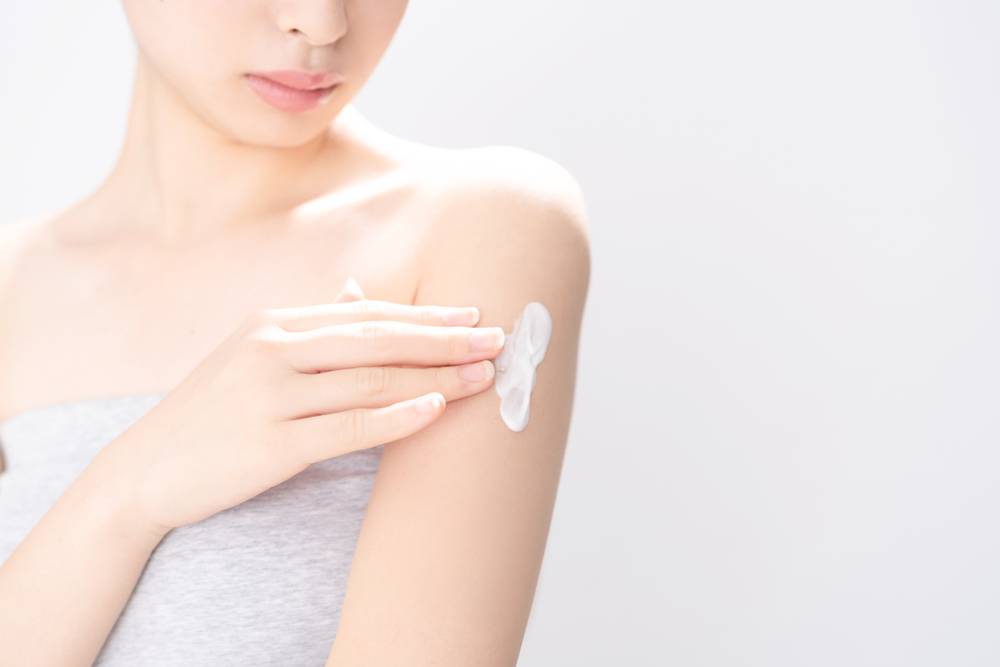Are you looking for new ways to protect your skin from the sun? Oral sunscreen might be an intriguing option. But how effective is this method compared to the topical sunscreens we are already familiar with?
The Function of Sunscreen
Sunscreen works by blocking UV radiation that can lead to skin cancer, such as melanoma. This is indicated by the Sun Protection Factor (SPF), which signifies how well a product protects against UVB rays. The higher the SPF value, the better the protection.
Sunscreens come in two main types, chemical or mineral sunscreens. Both are effective in protecting the skin from ageing and hyperpigmentation, but have different formulas and functions.
Chemical sunscreen
Chemical sunscreens contain active ingredients that absorb ultraviolet (UV) light and convert it into heat, and subsequently releases that heat from the skin. Common ingredients in chemical sunscreens include avobenzone, octisalate and octocrylene.
These formulations are usually lighter and easily absorbed, making them suitable for oily or combination skin. However, some people with sensitive skin may experience irritation or allergic reactions to these chemicals.
Example of chemical sunscreens:
- Coppertone, Sunscreen Lotion, Complete, SPF 30
- Eucerin, Advanced Hydration, Lightweight Sunscreen Lotion, SPF 30, Fragrance Free
- CosRx, Vitamin E, Vitalizing Sunscreen, SPF 50+
Mineral sunscreen
On the other hand, mineral sunscreens use active ingredients such as zinc oxide and titanium dioxide, which work by reflecting and scattering UV rays from the skin’s surface.

Mineral sunscreens are often recommended for sensitive skin, including children’s skin, as their formulas tend to be gentler and less likely to cause irritation. However, they may feel heavier and leave a white cast on the skin.
Example of mineral sunscreens:
- Cetaphil, Sheer Mineral Sunscreen Stick, SPF 50
- Beauty By Earth, Mineral Sunscreen, SPF 25, Zinc Oxide Sun Protection
- SOME BY MI, Truecica Mineral Calming, Tone-Up Sunscreen, SPF 50+ PA++++
What is Oral Sunscreen?
View this post on Instagram
Oral sunscreen offers a new way to protect the skin from sun exposure and can be combined with topical sunscreen for added protection.
These supplements contain certain nutrients and compounds, such as polyphenols from green tea extract, beta-carotene, and vitamins C and E, to improve the skin’s ability to absorb and disperse ultraviolet (UV) rays.
This helps to reduce inflammation and speeds up the recovery process of skin cells after sun exposure.
In addition, the antioxidants in oral sunscreen help protect skin cells from damage caused by free radicals produced by UV rays. Micronutrients, such as carotenoids (e.g. β-carotene and lutein) and polyphenols, also have an important role in reducing oxidative stress and inflammation due to UV exposure.
Randomised trials have shown that extract of Polypodium Leucotomos, when used in conjunction with topical sunscreen, can significantly improve skin protection from UV-induced problems, such as melasma.
While the results are promising, more research is needed to fully understand the benefits and optimal formulation of these skin protection agents.
Differences Between Oral and Topical Sunscreens
Oral and topical sunscreens function differently, but both aim to protect the skin from UV radiation.
- Topical sunscreens are applied directly to the skin and are divided into two types: chemical (which absorbs UV radiation) and physical (which reflects UV radiation). These products protect immediately, but require reapplication after sweating or swimming.
- Oral sunscreens are supplements that enhance the skin’s natural defences from within. They contain antioxidants and nutrients, such as beta-carotene and polyphenols, which help reduce UV damage and inflammation.
The effectiveness of topical sunscreen is often dependent on the frequency of use: many people do not realise they need to reapply sunscreen every two hours for optimal protection.
On the other hand, oral supplements provide more extensive protection and can be used in tandem with topical sunscreen. While topical sunscreen offers instant protection, combining it with oral sunscreen can further enhance the skin’s resilience to UV damage.
In short, topical sunscreen is your first line of defence, and oral sunscreen acts as internal support, but they work best when combined.
What the Doctors Say
There are many pills marketed as sunscreen, but most do not actually protect against sunlight.
“With these pills, people feel like they can pop a pill, not put on sunblock at all, and that’s completely dangerous and completely false [especially] with incidents of skin cancer rising the way it has been.” Dr. Jeanie Downie, a board-certified dermatologist explains to Huffpost.
“There’s nothing better than putting sunblock on your actual face, neck, ears, backs of hands every morning, and then reapplying it multiple times a day,”
For those who work outdoors, such as construction workers or traffic controllers, using a topical sunscreen with SPF 30 or higher is essential. Downie also stresses that, regardless of the weather, sunscreen should be used year-round.
Dr. Rachel Nazarian of Schweiger Dermatology Group also acknowledges that not everyone applies sunscreen correctly or frequently enough, especially if they are wearing makeup. In this case, sun protection supplements can be beneficial when used in conjunction with sunscreen.
“I would never tell people to turn away additional tools they could use to prevent skin cancer and even sun aging,” she said.
Is Oral Sunscreen Worth a Try?
Oral sunscreen containing photoprotection, particularly when combined with topical sunscreen, can be an interesting option to consider. However, oral sunscreen should not completely replace the use of topical sunscreen, as direct protection from UV rays remains important. A combination of oral and topical sunscreens can provide a more comprehensive strategy for protecting the skin from sun damage.
Note: Before starting to use oral sunscreen, especially for individuals with certain health conditions, it is important to consult a medical professional. Additionally, be aware of potential side effects that may arise and follow usage instructions closely to maximise its benefits.
We include products we think are useful for our readers. If you buy through links on this page, we may earn a small commission.

